Geneva Timber and Forest Study Papers
The Timber and Forest Study Papers encompasses sustainable forest management as well as the sound and legal use of forest products, for raw material and energy, and forest services. The objective is to assist member countries by: providing the best available information; facilitating policy dialogues and communication; and building capacity. The series is the product of a collaborative endeavour between the United Nations Economic Commission for Europe and the Food and Agriculture Organization of the United Nations.
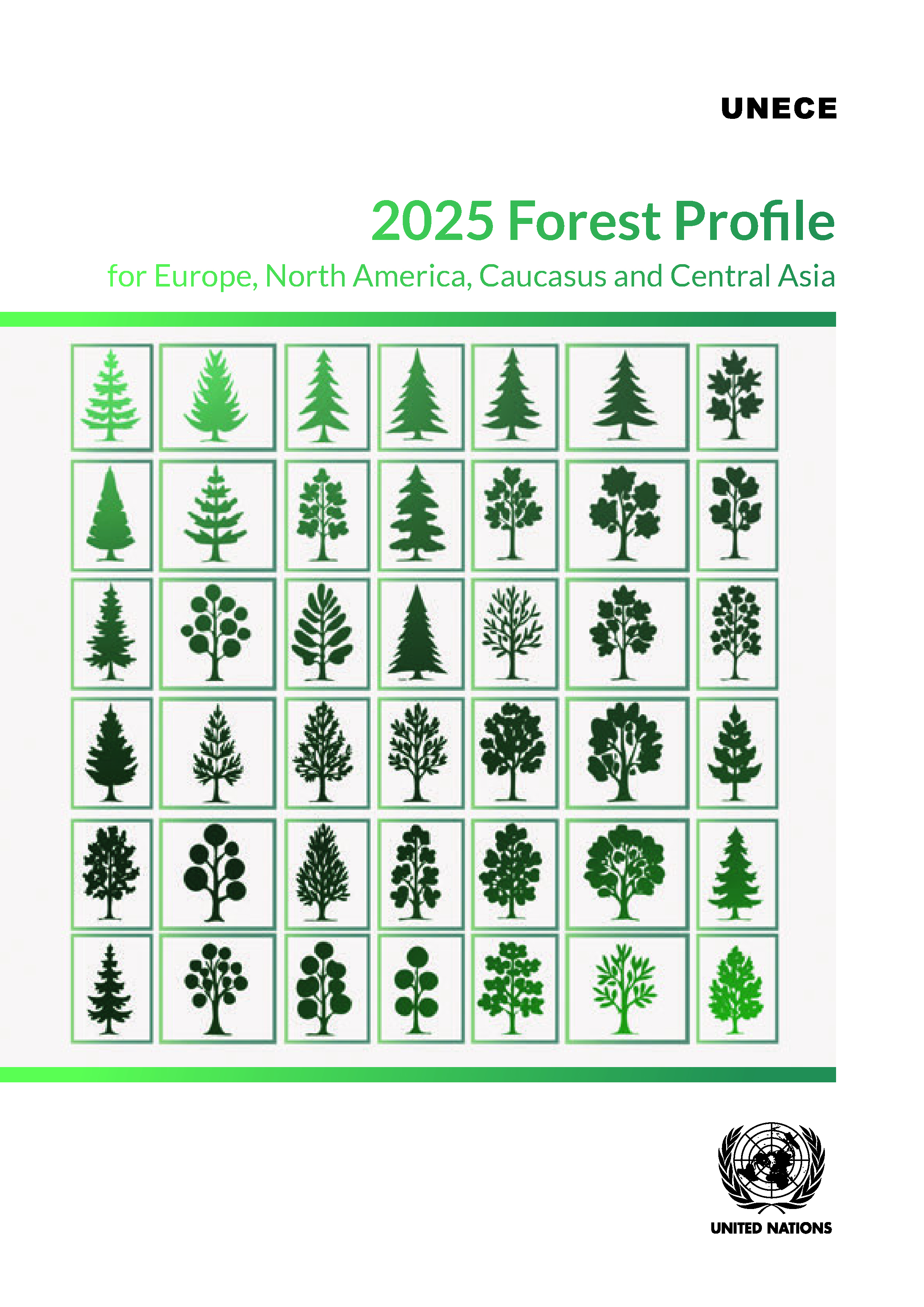
2025 Forest Profile for Europe, North America, Caucasus and Central Asia
This comprehensive study explores the multifaceted role of forests within the environment, economy, and society, with a specific focus on the ECE region. It begins by defining and presenting the global distribution of forests, followed by a detailed examination of their diverse biomes and typical forest types within the ECE region. The document tracks forest development, including area and growing stock dynamics, and highlights key tree species. It then delves into critical aspects such as the health and vitality of forests, their management practices (including ownership and functions), and their vital protective functions for both humans and the planet. Further sections are dedicated to the immense biodiversity found in ECE forests, their crucial role as carbon reservoirs in climate regulation, and their significant economic contributions through timber and non-wood forest products. Finally, the overview addresses the profound social dimensions of forests, recognizing their value for recreation and cultural heritage.
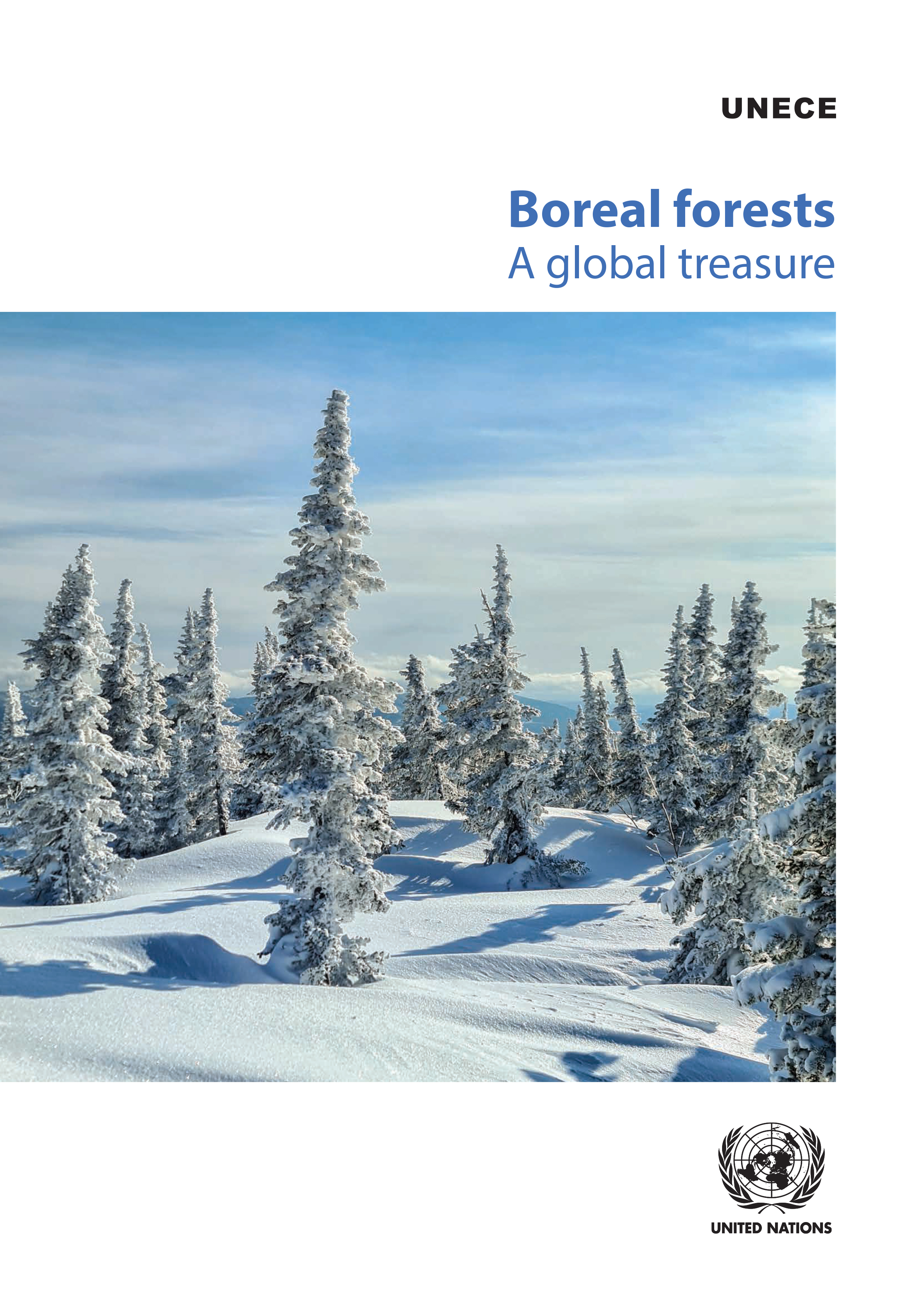
Boreal Forests: A Global Treasure
The study offers a comprehensive overview of forests and the forest sector within the boreal biome and delves into the importance of boreal forests in environmental, social, and economic contexts. The study is based on a thorough review of existing literature and data on boreal forests and country-specific national overviews prepared for this project by six UNECE countries with boreal forests. Despite their importance, boreal forests receive less attention than tropical forests. The study addresses this gap, examining their characteristics, management practices, and challenges.

Forest Landscape Restoration in the Republic of Moldova
Exploring the Potential for Forest Reproductive Material Production
The study was developed by the United Nations Economic Commission for Europe (UNECE) in response to the request of the Republic of Moldova, to improve the forest reproductive material (FRM) sector in the Republic of Moldova. The study includes an overview of FRM production in selected European countries, assesses Moldova's FRM production capacity and identifies challenges such as outdated technology and labour shortages. It highlights the need for better nursery infrastructure, species diversification and strategic planning to meet targets set in the National Afforestation and Reforestation Programme (NARP). Centralizing FRM production, modernizing techniques and securing political support are critical to success. The study outlines concrete steps to improve the FRM sector, link it to NARP objectives, and ensure long-term sustainability through comprehensive planning and stakeholder engagement.

Policy Guidelines: Low Carbon Construction in Cities
Reducing Construction's Carbon Footprint With Sustainable Wood Products
This publication provides an overview for policymakers and decision takers on how sustainably grown wood can contribute to the efforts of cities to reducing the carbon footprint in the built environment. The document emphasizes the carbon and other technical advantages of an increased use of wood as low carbon construction material in cities in the ECE region and beyond. It further provides guidance on how various actors could contribute to facilitating an increased utilization of wood from sustainable sources as a key raw material in low carbon construction in cities.

Forest Products Annual Market Review 2023-2024
The Forest Products Annual Market Review 2023-2024 provides a comprehensive analysis of markets in the UNECE region and reports on the main market influences beyond the region. It covers products from the forest to the end user and from roundwood and primary processed products to value-added, housing and wood energy. Statistics-based chapters provide economic overview and policies review, analyse the markets for soft sawn wood, wood-based panels, pulp and paper, and wood energy. Underlying the analysis is a comprehensive collection of publicly available data. The Review highlights the role of sustainable forest products in international markets, discusses policies concerning forests and forest products, assesses the main trends and drivers, and analyses the effects of the current economic situation on forest product markets including on bioeconomy.

Developing National Forest Information Systems
A Practical Guide
Forest information systems (FIS) play a crucial role in effective forest management and evidence-based decision-making processes. They provide a comprehensive and integrated approach to collect, analyse, and disseminate data and information related to forest ecosystems. This guide aims to equip users with the knowledge and practical tools necessary to carry out a pre-analysis for the efficient development and implementation of forest information systems at national level. The different sections include specific exercises and learning objectives, offering step-by-step instructions to help practitioners understand, develop and implement the outlined processes. The exercises covered in the guide include institutional mapping, understanding the organizational context, as well as defining business and IT-related objectives of a FIS programme. Each exercise is accompanied by introductions to the topics and explanations of the context. The guide emphasizes the importance of active stakeholder engagement and participatory analysis throughout the FIS development process. It encourages users to identify key-stakeholders, gather relevant information on the national context, and use this data for informed decisions. Additionally, the guide provides guidance on mapping activities in the national forest sector, as well as establishing linkages between actors, activities and demands.

Reporting on Forest Damages and Disturbances in the UNECE Region
To ensure that critical information is available to all, the United Nations Economic Commission for Europe (UNECE) and the Food and Agriculture Organization of the United Nations (FAO) have summarized in this publication the main dynamics and significance of forest damage, and their reporting in the UNECE region. The publication invites readers to reflect on possible harmonized methodologies and reporting schemes. In this regard, it also underlines the collective effort that is essential for the forest sector. Real-world scenarios, such as the analysis of forest damage and disturbance data, require state-of-the-art techniques beyond the usual statistical evaluation. Innovative technologies highlighted in this publication such as remote sensing, artificial intelligence and machine learning will need to be integral parts of any advances in forest damage assessment. Reporting on forest damage is not just a technical exercise. It is a critical element of our shared commitment to biodiversity, climate resilience and livelihoods. Supporting comprehensive reporting will lay the foundation for safeguarding forest ecosystems for future generations. This publication is an important step towards improving international reporting on forest damage and the result of a collaborative effort of national and international experts, supported by the secretariat.
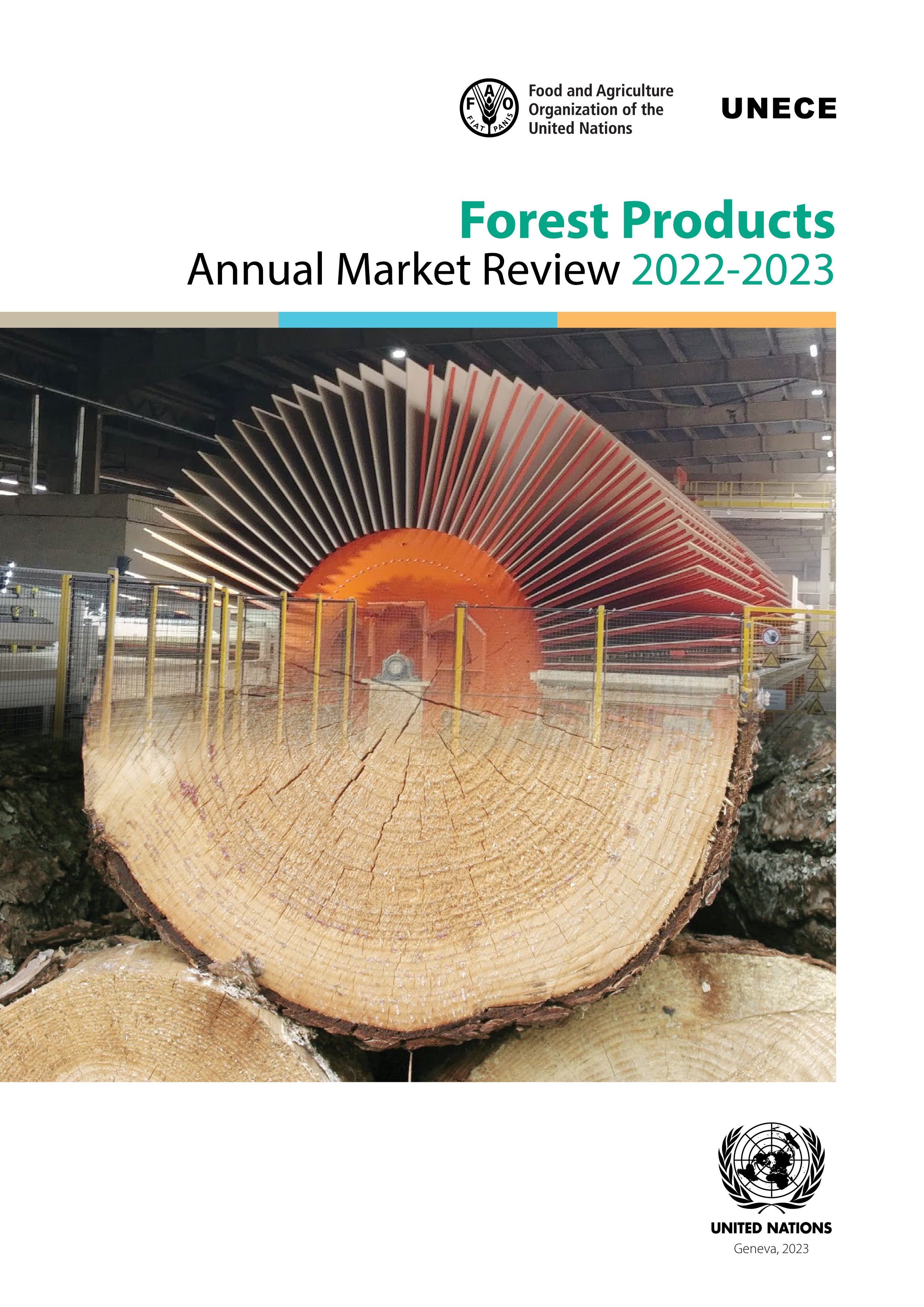
Forest Products Annual Market Review 2022-2023
The Forest Products Annual Market Review 2022-2023 provides a comprehensive analysis of markets in the UNECE region and reports on the main market influences beyond the region. It covers products from the forest to the end user and from roundwood and primary processed products to value-added, housing and wood energy. Statistics-based chapters analyse the markets, sawn hardwood and wood-based panels. Underlying the analysis is a comprehensive collection of data. The Review highlights the role of sustainable forest products in international markets, discusses policies concerning forests and forest products, assesses the main trends and drivers, and analyses the effects of the current economic situation on forest product markets.
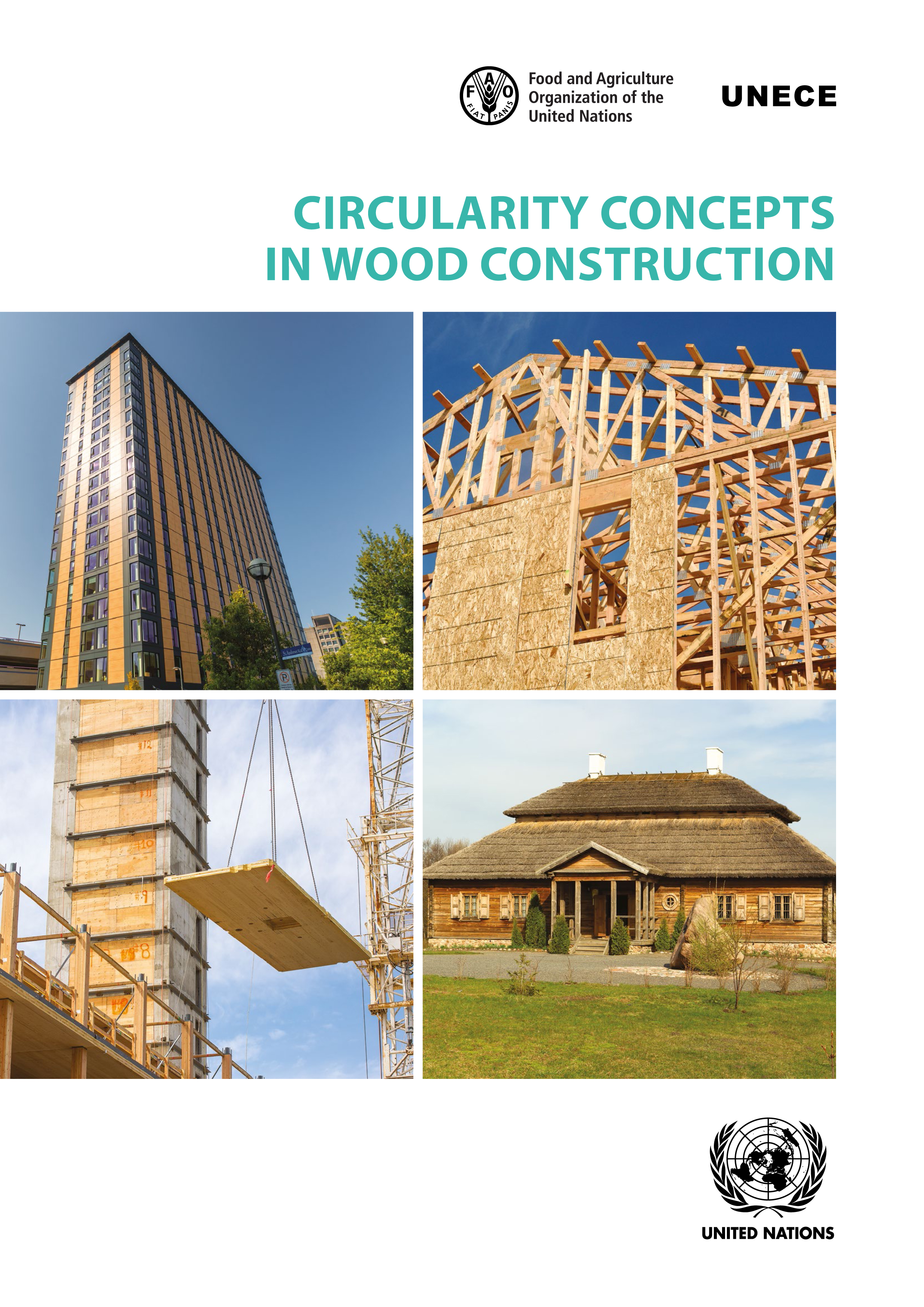
Circularity Concepts in Wood Construction
When it comes to sustainability and circularity, wood as a natural raw material has several advantages over other building materials. As a bio-based resource, it has considerable benefits concerning greenhouse gas emissions, carbon-storing, thermal insulation as well as human health and well-being compared to other construction materials. New types of wood products, being the result of extensive research, enable the extensive use of wood in tall buildings. At the same time, innovative wood products provide less manufacturing waste, low carbon-emission alternatives and store massive quantities of carbon while new technologies speed construction processes, promote energy efficiency and minimize waste. This study examines the benefits of wood as a construction material and discusses practices applied in the wood construction sector from the perspective of circularity, sustainability and climate change mitigation. It analyses how circularity concepts can be applied in the construction industry using different construction methods and at different stages of value chains. The study describes how different construction techniques and practices contribute to the renewal and sustainability of construction value chains. The analysis is supported by examples of good practice in UNECE member States.
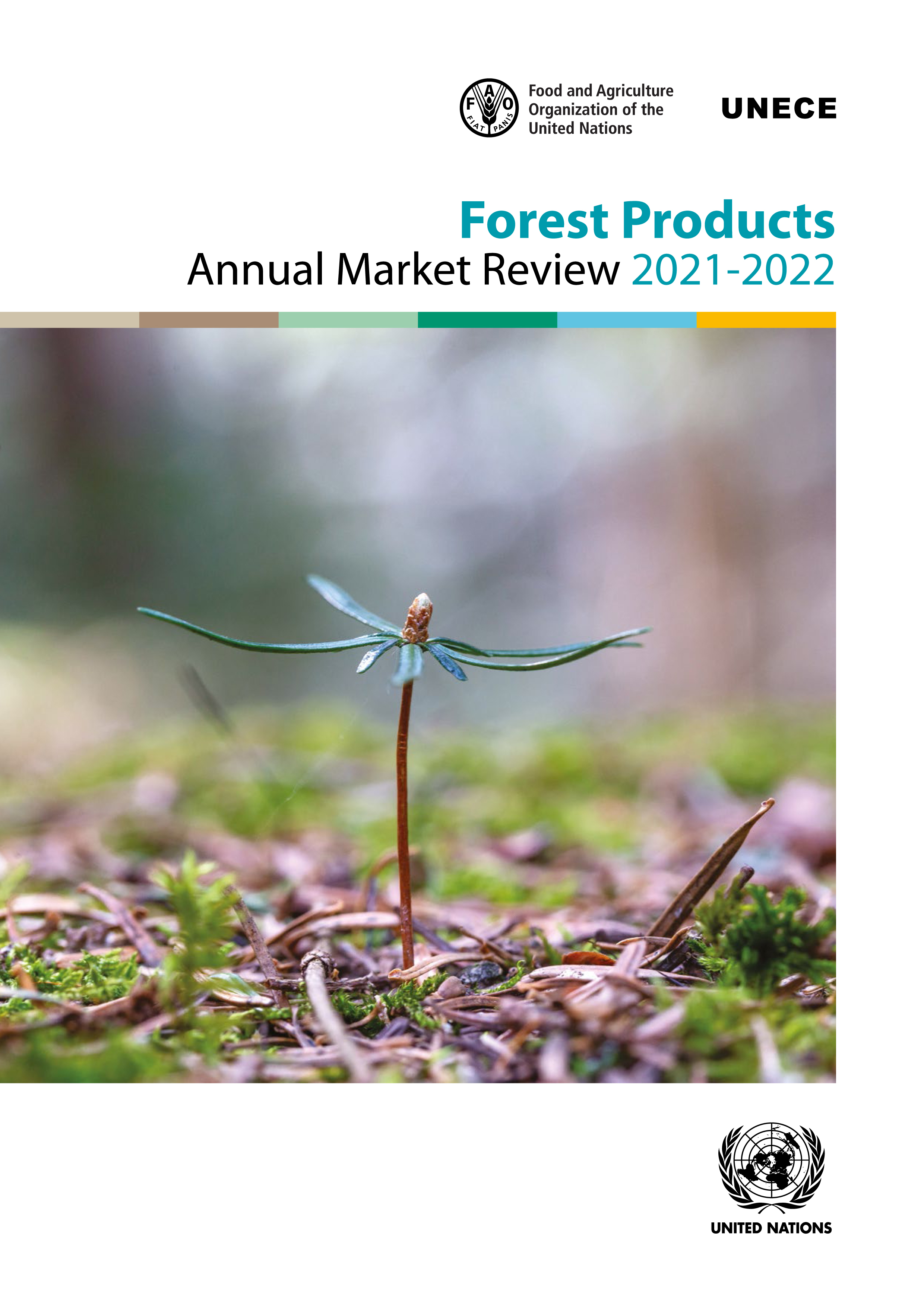
Forest Products Annual Market Review 2021-2022
The Forest Products Annual Market Review 2021-2022 provides a comprehensive analysis of markets in the UNECE region and reports on the main market influences beyond the region. It covers products from the forest to the end user and from roundwood and primary processed products to value-added, housing and wood energy. Statistics-based chapters analyse the markets for wood raw materials, sawnwood, wood-based panels, paper, paperboard and woodpulp. Underlying the analysis is a comprehensive collection of data. The Review highlights the role of sustainable forest products in international markets, discusses policies concerning forests and forest products, assesses the main trends and drivers, and analyses the effects of the current economic situation on forest product markets.
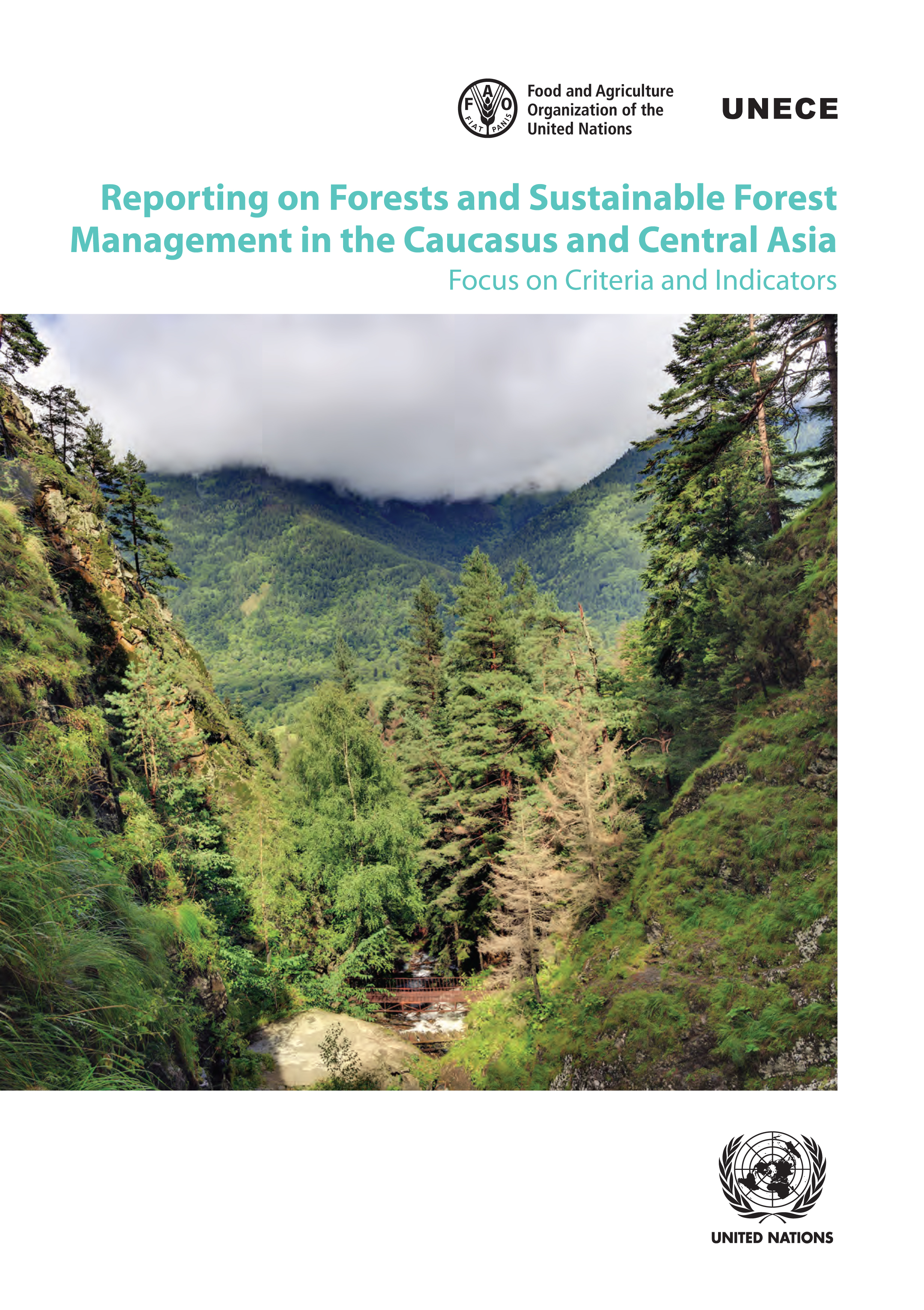
Reporting on Forests and Sustainable Forest Management in the Caucasus and Central Asia
Focus on Criteria and Indicators
Reporting on Forests and Sustainable Forest Management in the Caucasus and Central Asia provides an overview of status and developments in reporting on forests and sustainable forest management in five countries of the Caucasus and Central Asia (Armenia, Georgia, Kazakhstan, Kyrgyzstan and Uzbekistan). This reporting involves looking at forests in the context of the United Nations principles of sustainable development, recognizing the multiple roles forests play in achieving the United Nations Sustainable Development Goals. Criteria and indicators are tools used to define, guide, monitor and assess progress towards sustainable forest management that help our understanding and inform discussions about sustainable forest management. They operate at the global, regional, international, national, subnational, and even at forest management unit levels; and are a basis for informed decision making, establishing national forest policy and facilitating international reporting. A flexible framework of criteria and indicators helps to develop systems adjusted to the capacities, needs, and conditions in which they are applied. This publication provides information about the processes and results of national efforts in building criteria and indicator sets for countries of the region.
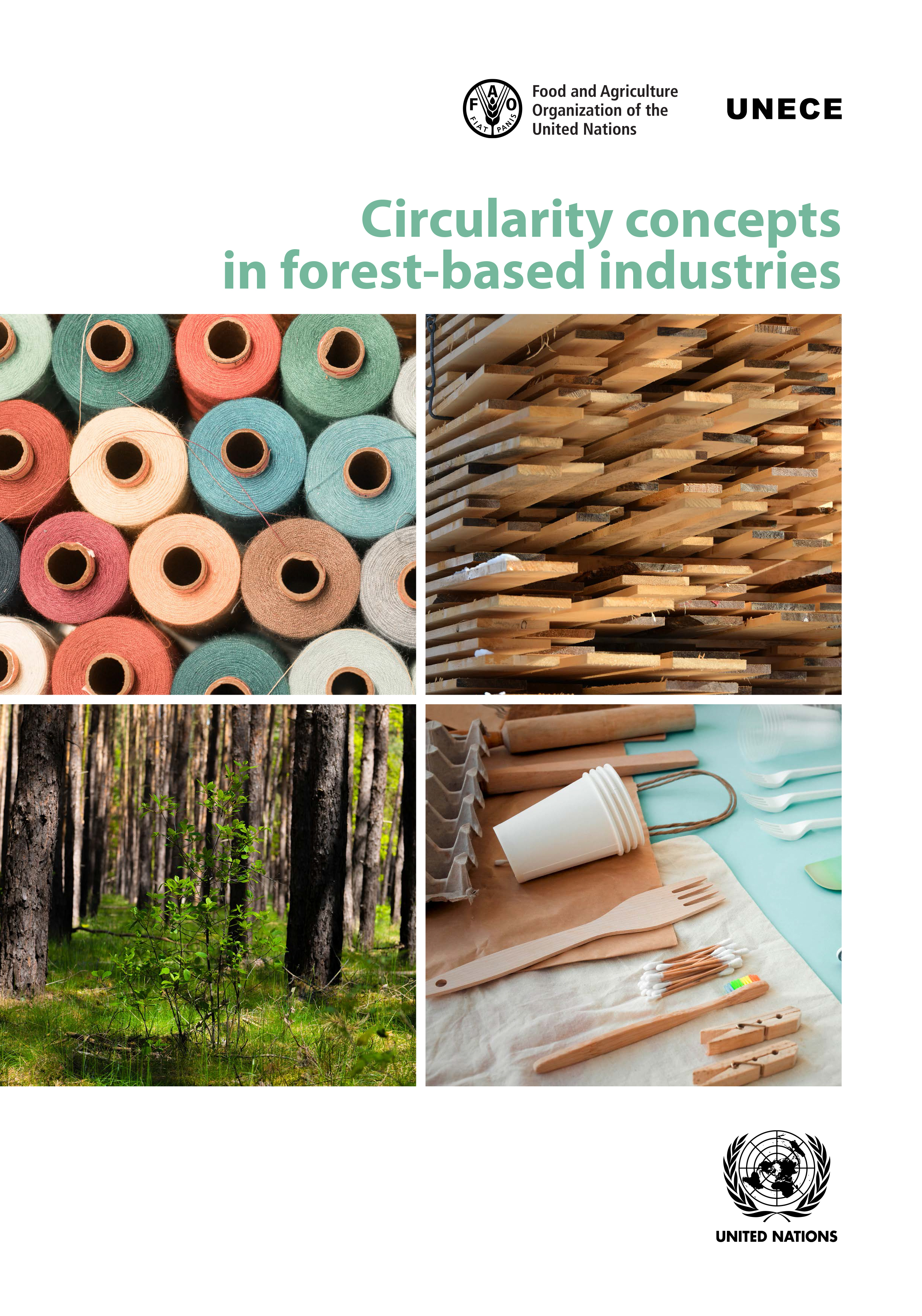
Circularity Concepts in Forest-based Industries
The world’s prevalent economic model, based on a ‘take-make-use-dispose’ approach, cannot maintain and raise human standards of living without causing environmental degradation and incurring economic risks. Decoupling economic activity from the increasing demand for natural resources could be done through circular, bio-based economy approaches leading to a regenerative growth model, allowing humankind to reduce its environmental footprint on the planet. The forest sector, situated in both the biological and technical cycles of a circular economy, is well suited to embrace a circular, bio-based economic model. However, challenges in the overall circularity of forest-based value chains persist as a result of the sector’s traditional means of operation. To ensure the sustainability of the forest-based value chains, continuous consideration and coordination of circularity at all stages of the value chains are needed. A viable starting point for this is with the principles of sustainable forest management (SFM), following by the optimized cascading use of wood at every production stage and concluding with the recovery of post-consumer wood at the end of value chains. This study analyses the existing and possible limitations to circular approaches in forest-based industries, namely the woodworking industry (focusing on sawn wood processing, bioenergy production and wood in construction), the furniture industry, the paper and pulp industry as well as industry using cellulose-based fibres and cellulose-based plastics. The analysis provides evidence that not all circular approaches are sustainable under all circumstances. In some cases, the focus on circularity may cause environmental externalities, in other cases, it may not guarantee economic viability. While the transition to a circular, bio-based economy can be facilitated by a legislator, the process will need to develop organically, based on the location of industries, proximity to available (waste) resources and consumer preferences.
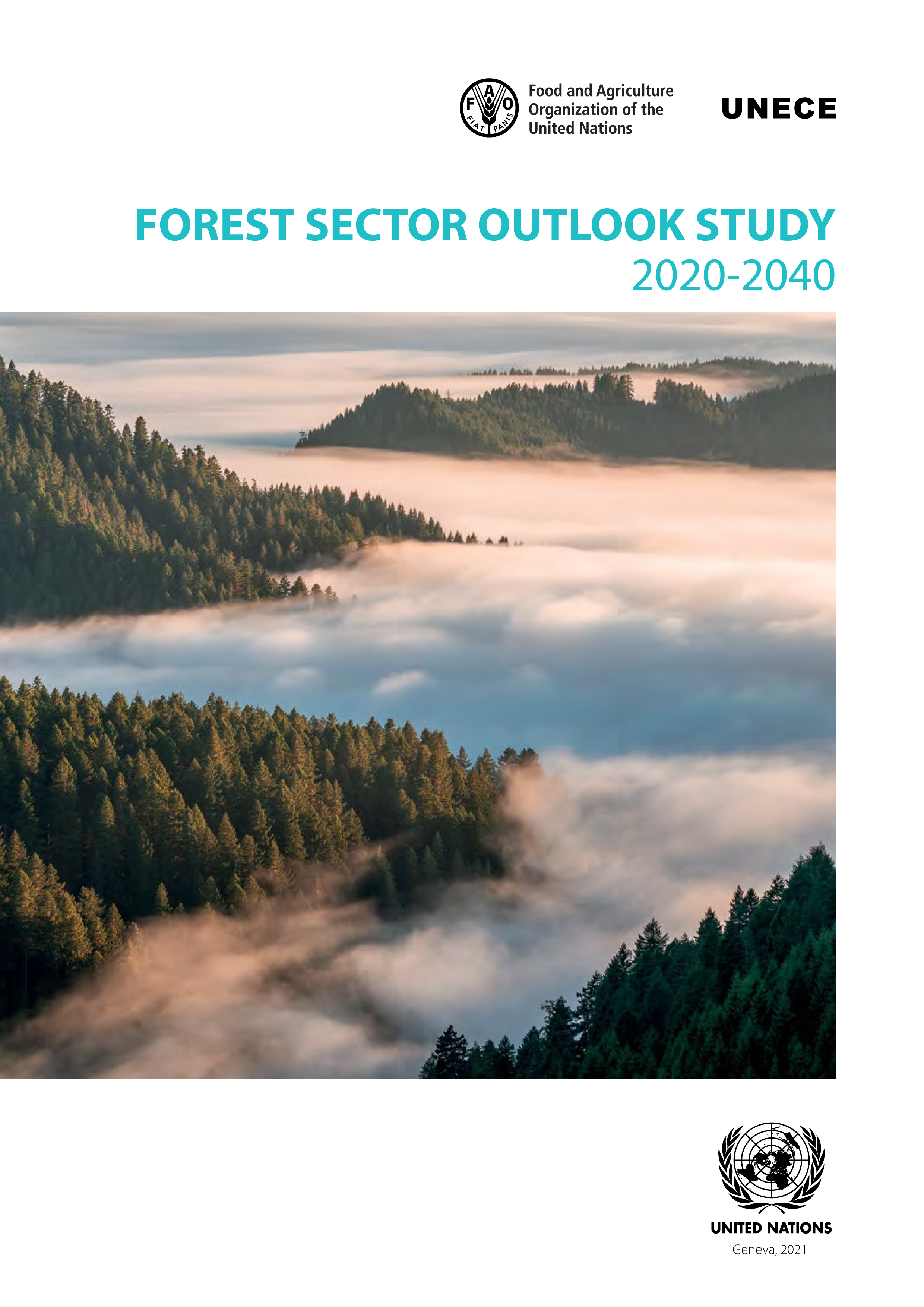
Forest Sector Outlook Study 2020-2040
The Forest Sector Outlook 2020-2040 study for the UNECE region provides information that supports decision-making by showing the possible medium- and long-term consequences of specific policy choices and structural changes, using scenario analyses whenever possible. The study is the first to cover the entire UNECE region and provides results for the main UNECE subregions of Europe, North America and the Russian Federation.
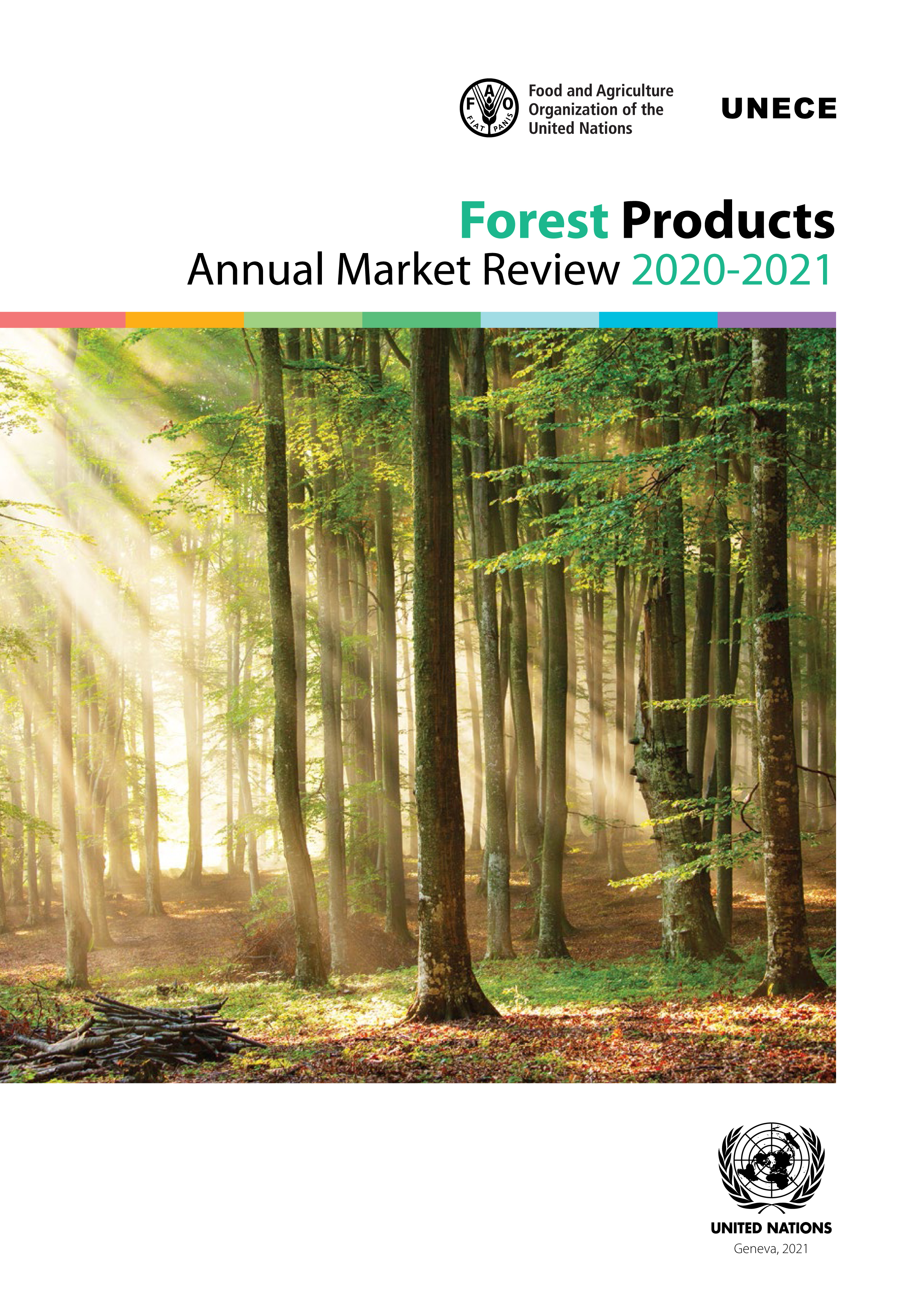
Forest Products Annual Market Review 2020-2021
The Forest Products Annual Market Review 2021-2021 provides a comprehensive analysis of markets in the UNECE region and reports on the main market influences beyond the region. It covers products from the forest to the end-user and from roundwood and primary processed products to value-added, housing, and wood energy. Statistics-based chapters analyze the markets for wood raw materials, sawnwood, wood-based panels, paper, paperboard, and wood pulp. Underlying the analysis is a comprehensive collection of data. The Review highlights the role of sustainable forest products in international markets, discusses policies concerning forests and forest products, assesses the main trends and drivers, and analyses the effects of the current economic situation on forest product markets.
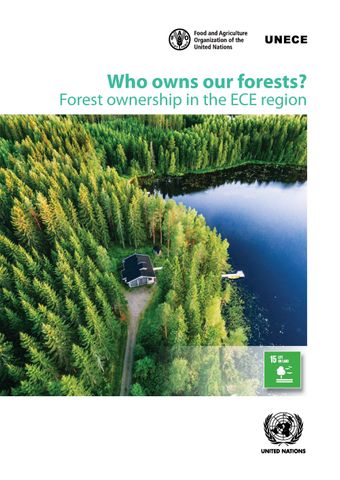
Who Owns our Forests? Forest Ownership in the ECE Region
This study examines forest ownership in the ECE region. Based on data on 35 countries, and the first to include all forest ownership categories, this study investigates the changing nature and patterns of forest ownership, the ways in which governance and social structures influence forest owners and users, as well as forest management. Within the limits of data availability and harmonization, the publication provides an overview of, and a new baseline for, understanding the diversity and dynamics of forest ownership in the ECE region.

Forest Products Annual Market Review 2018-2019
The Forest Products Annual Market Review 2018-2019 provides a comprehensive analysis of markets in the UNECE region and reports on the main market influences outside the UNECE region. It covers the range of products from the forest to the end-user:from roundwood and primary processed products to value-added and housing. Statistics-based chapters analyse the markets for wood raw materials, sawn softwood, sawn hardwood, wood-based panels, paper, paperboard and woodpulp. Other chapters analyse policies, forest products trade barriers affecting the UNECE region, and markets for wood energy. Underlying the analysis is a comprehensive collection of data. The Review highlights the role of sustainable forest products in international markets. Policies concerning forests and forest products are discussed, as well as the main drivers and trends. The Review also analyses the effects of the current economic situation on forest products markets.
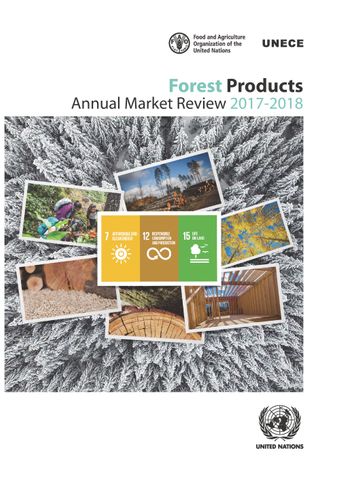
Forest Products Annual Market Review 2017-2018
The Forest Products Annual Market Review 2017-2018 provides a comprehensive analysis of markets in the UNECE region and reports on the main market influences outside the UNECE region. It covers the range of products from the forest to the end-user:from roundwood and primary processed products to value-added and housing. Statistics-based chapters analyse the markets for wood raw materials, sawn softwood, sawn hardwood, wood-based panels, paper, paperboard and woodpulp. Other chapters analyse policies, trade barriers affecting forest products, and markets for wood energy. Underlying the analysis is a comprehensive collection of data. The Review highlights the role of sustainable forest products in international markets. Policies concerning forests and forest products are discussed, as well as the main drivers and trends. The Review also analyses the effects of the current economic situation on forest products markets.
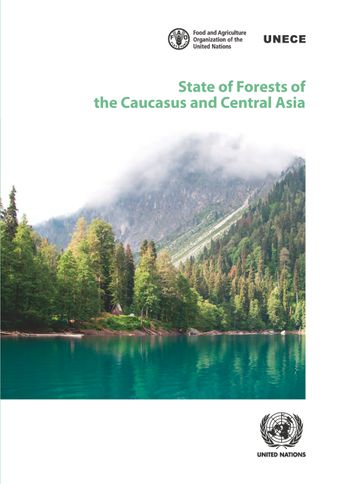
State of Forests of the Caucasus and Central Asia
Overview of Forests and Sustainable Forest Management in the Caucasus and Central Asia Region
This study presents the forest resources and the forest sector of the region, including trends in, and pressures on the resource, to describe the policies and institutions for the forest sector in the region and to list the major challenges the sector faces, and the policy responses in place or planned. It is a cooperative effort by the author, the UNECE/FAO secretariat and national experts, done with the use of the best available data. It covers all dimensions of sustainable forest management and includes national profiles of all countries of the region.
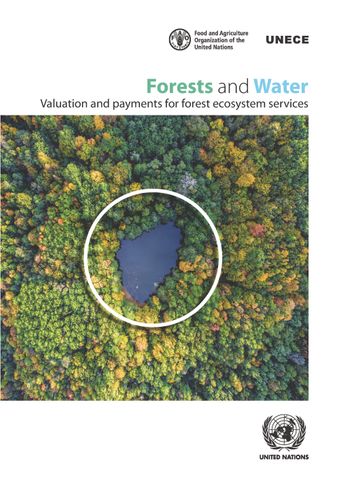
Forests and Water
Valuation and Payments for Forest Ecosystem Services
The objectives of this study are to further improve our understanding about the ways in which payments for ecosystem services schemes can be applied to forests, in particular focusing on forest’s hydrological functions for the mutual benefit of both humans and the environment. In addition, the study covers advances and challenges facing these schemes and provides practical guidance for policymakers and practitioners. This study contains the most comprehensive currently available database of case studies on forest-water related payment for ecosystem services schemes in the UNECE region.
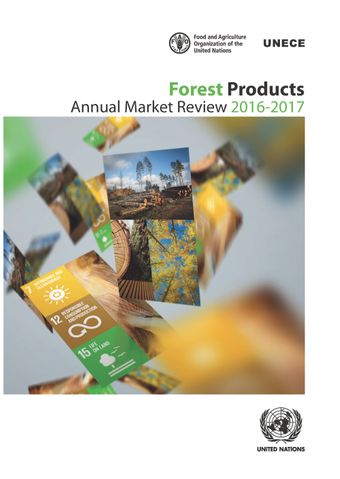
Forest Products Annual Market Review 2016-2017
This publication provides a comprehensive analysis of markets in the UNECE region and reports on the main market influences outside the UNECE region. It covers the range of products from the forest to the end-user: from roundwood and primary processed products to value-added and housing. Statistics-based chapters analyse the markets for wood raw materials, sawn softwood, sawn hardwood, wood-based panels, paper, paperboard and woodpulp. Other chapters analyse policies, trade barriers affecting forest products, and markets for wood energy. The Review highlights the role of sustainable forest products in international markets. It also analyses the effects of the current economic situation on forest products markets.
